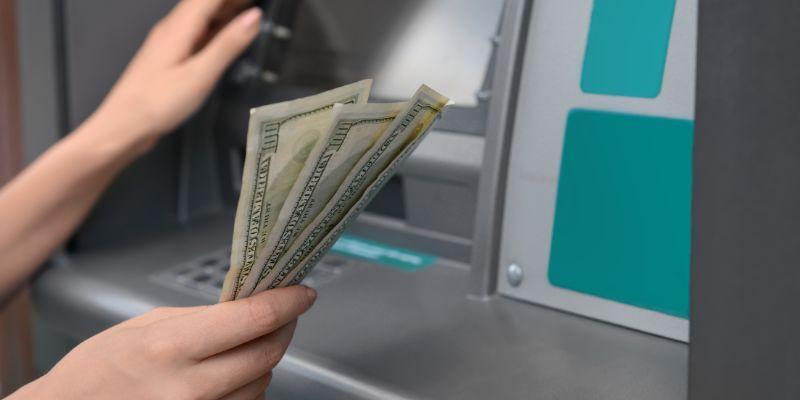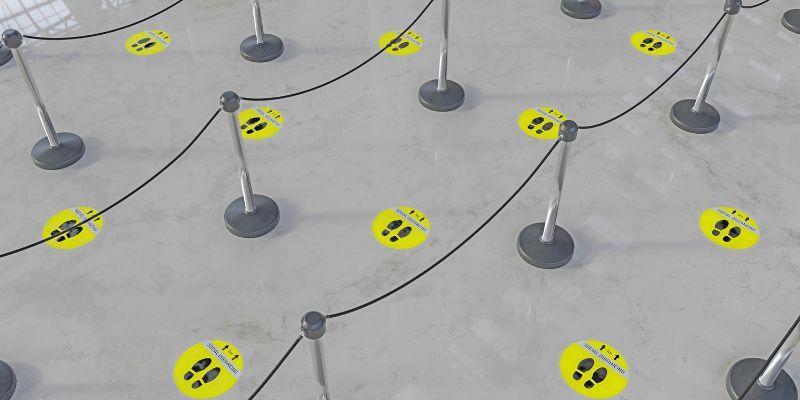Biometric technology uses unique physical traits, like fingerprints or facial features, to verify a person’s identity.
As technology advances, self-service kiosks are becoming more common in airports, banks, and retail stores. They offer convenience and speed for users.
Integrating biometric technology makes these kiosks more intelligent and secure, making transactions and interactions even more efficient.
In this article, we’ll explore how biometric technology is used in self-service kiosks, discuss its benefits, and look at the latest trends in this growing field. We’ll also see how biometrics improve the overall efficiency of these kiosks.
What Is Biometric Technology?
Biometric technology uses unique physical or behavioral characteristics to identify and verify individuals. Common types of biometrics include fingerprint recognition, facial recognition, and iris scanning.
These methods rely on capturing and analyzing specific traits unique to each person, making them highly secure and difficult to replicate.
For example, fingerprint recognition works by scanning the unique patterns on a person’s fingertip.
In contrast, facial recognition analyzes the distinct features of a person’s face, such as the distance between their eyes or the shape of their nose.
Iris scanning captures the intricate patterns in the colored part of the eye, offering another layer of security.
As biometric technology advances, it is increasingly integrated into self-service kiosks, where it helps to quickly and accurately verify users’ identities.
This increases security and speeds up processes like check-ins, payments, and access to services, making interactions smoother and more efficient.
Types of Biometric Technologies Used in Self-Service Kiosks

In self-service kiosks, various biometric technologies are employed to improve security, speed, and user experience.
These technologies make it easier for kiosks to identify users accurately, allowing smoother and more efficient interactions. Below are the key types of biometric technologies commonly used in self-service kiosks.
1. Fingerprint Recognition
Fingerprint recognition is one of the most widely used biometric technologies in self-service kiosks. This method scans and analyzes the unique patterns on a person’s fingertip to verify their identity.
It’s popular because it’s quick, easy to use, and highly accurate. Users place their finger on a scanner, and their identity is confirmed within seconds.
How biometric technology is used in self-service kiosks is vital in improving efficiency for processes like payments, access control, and check-ins.
Since fingerprints are unique to each individual, this method reliably prevents unauthorized access, making it a common choice in industries such as banking and airport security.
2. Facial Recognition
Facial recognition technology analyzes the distinct features of a person’s face, such as the shape of their eyes, nose, and mouth, to identify them.
This technology is increasingly used in self-service kiosks because it doesn’t require physical contact, making it hygienic and convenient.
In settings like airports and hotels, facial recognition allows users to quickly check-in or access services without needing to remember passwords or carry physical identification.
This is a prime example of how biometric technology is used in self-service kiosks to improve user convenience and speed up transactions.
Additionally, it’s part of the growing biometric technology trends in kiosks, prioritizing contactless solutions in response to health concerns.
3. Iris Scanning
Iris scanning is a highly secure form of biometric technology that involves capturing and analyzing the unique patterns in the colored part of a person’s eye. This method is incredibly accurate because no two irises are alike, even in identical twins.
Iris scanning is often used in self-service kiosks in high-security environments like government buildings or research facilities. It ensures that only authorized individuals can access sensitive areas or information.
By integrating this technology, self-service kiosks can provide a higher level of security, making it a key player in biometric kiosk technology trends. Despite its complexity, the process is quick, increasing user interaction efficiency.
4. Voice Recognition
Voice recognition technology identifies individuals based on their unique vocal characteristics. In self-service kiosks, this technology allows users to interact with the system verbally, providing commands or verifying their identity simply by speaking.
This is particularly useful in environments where hands-free operation is necessary or for users with disabilities who might find other biometric methods challenging.
Biometric technology used in self-service kiosks like this improves accessibility and convenience, making it easier for a broader range of users to access services.
As part of the kiosk biometric technology trends, the ability to recognize and authenticate users through their voice is becoming more common.
5. Palm Vein Recognition
Palm vein recognition is a less standard but highly secure biometric technology that reads the unique vein patterns in a person’s hand.
When users place their palm over a scanner, the system captures an image of their vein pattern and compares it to a stored template for identification.
This method is complicated to replicate, making it ideal for environments where high security is essential.
Palm vein recognition is often used in self-service kiosks in healthcare settings or high-security financial transactions, where precise identification is critical.
By adopting this technology, kiosks can provide an extra layer of security, showcasing how biometric technology is used in self-service kiosks to improve safety and efficiency.
Applications of Biometric Technology in Self-Service Kiosks

Biometric technology is being integrated into self-service kiosks across various industries, enhancing their functionality and security. Below are vital applications where biometric technology is making a significant impact.
1. Identification and Authentication Processes
One of the primary applications of biometric technology in self-service kiosks is identification and authentication.
Whether verifying a passenger’s identity at an airport or confirming a customer’s account details at a bank, biometrics like fingerprints and facial recognition ensure that only authorized users gain access.
This is a powerful example of how biometrics improve efficiency in self-service kiosks. It speeds up the process while maintaining high security. Users no longer need to remember passwords or carry physical ID cards, making the experience faster and more convenient.
2. Secure Payment Transactions
Biometric technology is revolutionizing secure payment transactions in self-service kiosks. Using biometrics like fingerprint or facial recognition, kiosks can verify a customer’s identity before completing a transaction, significantly reducing the risk of fraud.
This method ensures that only the rightful owner of a bank account or credit card can authorize payments, which is especially important in retail and banking environments.
Integrating biometric technology trends in kiosks for secure payments gives customers peace of mind and businesses a reliable way to protect financial transactions.
3. Personalized Customer Experiences
Biometric technology enables self-service kiosks to offer personalized customer experiences by recognizing individual users and tailoring services to their preferences.
For instance, a kiosk might greet a returning customer by name and offer product recommendations based on previous visits.
This level of personalization is possible because the kiosk can identify the user through biometric data like facial recognition or fingerprints.
Biometric technology used in self-service kiosks to personalize interactions not only adds to customer satisfaction but also encourages repeat visits, making the customer feel valued and understood.
4. Access Control in Restricted Areas
Biometric technology is crucial for access control in restricted areas, ensuring only authorized personnel can enter sensitive zones.
In self-service kiosks used in offices, laboratories, or airports, biometrics such as iris scanning or fingerprint recognition are employed to grant or deny access.
This application highlights how biometric technology is used in self-service kiosks to improve security, prevent unauthorized entry, and protect valuable assets or sensitive information.
Integrating these systems into kiosks automates the access control process, making it both more secure and efficient.
5. Healthcare and Patient Management
In the healthcare industry, biometric technology is used in self-service kiosks to manage patient information and streamline check-ins.
Patients can use biometrics, such as fingerprints or facial recognition, to quickly access their medical records, verify their identity, or check in for appointments without needing physical documents.
This not only speeds up the process but also reduces the chances of errors in patient identification.
How biometrics improve efficiency in self-service kiosks within healthcare settings is crucial for enhancing patient care, ensuring accurate record-keeping, and reducing administrative burdens on healthcare providers.
Benefits of Using Biometric Technology in Self-Service Kiosks

Integrating biometric technology in self-service kiosks offers numerous benefits, making them more secure, efficient, and user-friendly. Below are the key advantages of incorporating biometrics into kiosks.
1. Enhanced Security and Fraud Prevention
Biometric technology significantly increases security in self-service kiosks by ensuring only authorized users can access services or complete transactions.
Biometrics such as fingerprints, facial recognition, and iris scans are unique to each individual, making it nearly impossible for fraudsters to replicate or steal someone’s identity.
This technology reduces the risk of identity theft, unauthorized access, and financial fraud, which are common concerns in industries like banking and retail.
How biometric technology is used in self-service kiosks to bolster security is critical for businesses that prioritize protecting their customers’ sensitive information.
- Prevents unauthorized access to secure areas.
- Ensures that financial transactions are only completed by verified users.
2. Increased Convenience and Efficiency
One of the most significant benefits of biometric technology in self-service kiosks is its increased convenience and efficiency.
Users no longer need to remember passwords, carry physical IDs, or fill out lengthy forms. Instead, they can use their fingerprint, face, or other biometric identifiers to access services quickly. This aligned process speeds up transactions, reduces wait times, and simplifies user interactions.
How biometrics improve efficiency in self-service kiosks is especially evident in busy environments like airports or retail stores, where speed and ease of use are paramount.
- Eliminates the need for physical documents or cards.
- Reduces the time spent on identification and authentication processes.
3. Improved User Experience and Satisfaction
Biometric technology contributes to a superior user experience by making interactions with self-service kiosks more personalized and hassle-free.
Users appreciate the ease with which they can access services and complete transactions without the need for passwords or manual entry of personal information.
This level of convenience leads to higher satisfaction, as users feel more in control and secure when using these kiosks.
How biometric technology is used in self-service kiosks to improve the user experience also includes offering personalized content and services based on previous interactions, further increasing customer loyalty and satisfaction.
- Personalizes the user experience by recognizing returning customers.
- Simplifies complex processes, making kiosks more user-friendly.
4. Faster Processing Times
With biometric technology, self-service kiosks can process transactions and services much faster than traditional methods. Biometrics like fingerprint or facial recognition allow almost instantaneous verification, eliminating the need for time-consuming manual checks.
This speed is particularly beneficial in environments where quick service is essential, such as airports, hospitals, or busy retail locations.
How biometrics improve efficiency in self-service kiosks is evident in the reduced queuing times and the ability to handle more users in less time, improving overall service delivery.
- Accelerates verification and authentication processes.
- Reduces the time spent by users at kiosks, improving overall throughput.
5. Reduction in Operational Costs
Incorporating biometric technology into self-service kiosks can significantly reduce operational costs. Businesses can save on labor costs and minimize errors by automating tasks that would otherwise require human intervention, such as identity verification and transaction processing.
Additionally, the enhanced security biometrics provides reduces the risk of fraud-related losses.
The growing adoption of biometric technology trends in kiosks also allows businesses to streamline operations, requiring fewer resources to manage the same or even increased levels of customer service.
- Lowers the need for human staff to handle routine tasks.
- Reduces losses associated with fraud and identity theft.
Case Studies
1. Transforming Telecom Services: The Power of Biometric Technology in Self-Service Kiosks
Kcell Kazakhstan has deployed Azimut’s SIM Dispensing Kiosks to digitize customer experiences by integrating biometric technology into self-service kiosks. These kiosks allow users to purchase, replace, and register SIM cards with secure, fast, and contactless services.
The intuitive interface and 24/7 availability ensure convenience, while the biometric authentication, including facial recognition and real-time KYC, boosts security. This cutting-edge solution reduces operational costs and improves customer satisfaction by offering personalized, multilingual services.
As biometric trends continue to evolve, such innovations are set to transform how telecom services are accessed globally, providing a safer and more efficient customer journey.
2. Elevating Customer Experience: How Biometric Technology is Used in Self-Service Kiosks at San Diego County
San Diego County’s Planning & Development Services (PDS) partnered with Wavetec to enhance customer experiences using biometric technology in their self-service kiosks. Implementing Lobby Leader, a queue management software, revolutionized the permit process by reducing wait times and optimizing service delivery.
The kiosks, equipped with real-time notifications, digital signage, and wayfinding tools, ensure efficient customer flow and service.
Biometric technology enables secure, fast, and smooth customer interactions, allowing PDS to provide personalized services, streamline operations, and improve overall satisfaction.
This collaboration showcases the power of biometric technology in creating efficient, customer-centric public service environments and demonstrates its potential for broader applications.
FAQs
How does biometric technology improve security in self-service kiosks?
Biometric technology boosts security by using unique physical traits, like fingerprints or facial recognition, to verify users’ identities. This makes it nearly impossible for unauthorized individuals to access services or complete transactions, significantly reducing fraud.
How can businesses use biometric technology?
Businesses can use biometric technology in self-service kiosks for secure user authentication, personalized customer experiences, and faster transaction processing. This technology helps improve efficiency, enhance customer satisfaction, and reduce operational costs.
What future advancements can we expect in biometric technology for self-service kiosks?
Future advancements may include more accurate and faster biometric recognition systems, integration with AI for predictive analytics, and the expansion of biometric technology trends in kiosks to include more advanced forms like DNA recognition and multi-modal biometrics.
Final Words
Biometric technology transforms self-service kiosks, making them more secure, efficient, and user-friendly. Kiosks can provide fast, accurate, and personalized services by integrating biometrics like fingerprint recognition, facial recognition, and iris scanning.
This improves the user experience and helps businesses reduce operational costs and augment security.
As biometric technology trends in kiosks evolve, we can expect even more innovative applications to revolutionize further how we interact with self-service systems.
From secure payments to streamlined access control, how biometric technology is used in self-service kiosks will play a crucial role in shaping the future of automated services.
BOOK A FREE DEMO





